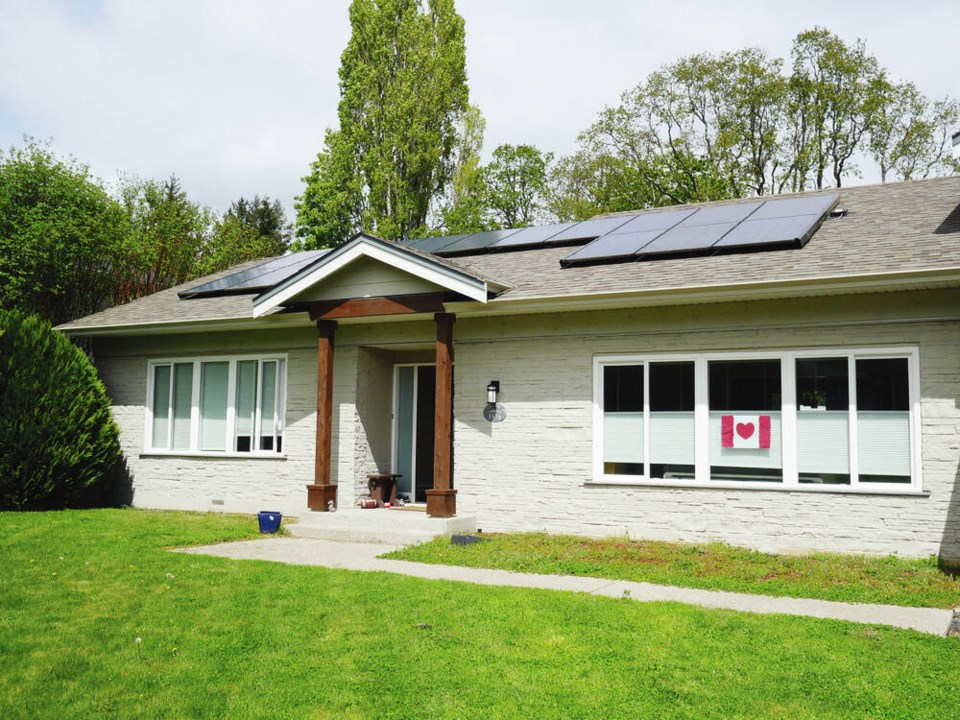Residents of Victoria can determine the amount of sunshine almost any building in the city receives over the course of a year with the newly announced Solar Rooftop Tool. The information can then be used to determine potential savings with the installation of photovoltaic solar panels.
The online resource, developed by the City of Victoria with help from the University of Victoria and the University of British Columbia, helps inform Victoria’s residential, commercial and industrial occupants of their buildings’ potential to generate electricity using solar panels.
“We know that climate change is the challenge of our time and our city continues to be out in front finding solutions that residents can use to make a difference,” said Victoria Mayor Lisa Helps. “This tool will help residents who want to blaze a trail in the use of renewables or use their home to generate power.”
The tool provides information on power generation potential, how much a solar system might cost, available rebates and financing options.
Users can select an address within Victoria’s boundaries and calculate the potential energy generation based on the number of solar panels installed.
Due to improvements to solar panels, and Victoria’s climate, there is enough sunlight to generate electricity throughout the year.
“The footprint for the new solar panels are smaller, but they are generating more power than before,” said Ed Knaggs, vice president of HES PV, a solar energy equipment supplier in Victoria.
“Solar energy makes sense as more and more people demand greener homes and governments seek renewable energy solutions as they take the necessary steps to reduce emissions to get to net zero.
“The new tool announced by the City of Victoria adds a new layer to current incentives.”
The Solar Rooftop Tool is part of the City of Victoria’s Climate Leadership Plan, which sets a goal of having buildings that are energy efficient and powered by renewable energy.
“The tool is meant to build awareness and give residents options on how to reduce their greenhouse gas emissions,” said Steve Young, climate and environmental sustainability specialist for the city. “There is now a greater urgency to act.”
In August, the federal government unveiled the sa���ʴ�ý Greener Homes grant, which offers up to $5,000 for homeowners to make energy-efficient retrofits to their homes.
“Compared with 20 years ago, the cost of a solar photovoltaic system has dropped by 90 per cent,” said Knaggs.
The average sa���ʴ�ý household uses approximately 10,000 kilowatt hours of energy a year. Using the calculator on the Solar Rooftop Tool, a 4 kWh system, which would generate approximately 3,261 kWh of energy annually, would cost roughly $10,000 (before rebates). Energy from the system, mounted on the south-facing roof of a single-family dwelling, can power a heat pump, displacing 54 per cent of the home’s heating load, or result in a 30 per cent reduction in power requirements.
That energy can also be used to charge an electric vehicle. “Some of my clients drive on sunshine,” said Knaggs. Using the same energy calculations, an electric vehicle would be able to travel about 18,000 kilometres.
He said that the major contributor to increased acceptance of solar power is sa���ʴ�ý Hydro’s net metering program, where customers who generate more electricity than they can use can feed it back into the system for credit.
“That program is almost better than rebates offered by other provinces,” said Knaggs.
The size of a solar system is typically only limited by the size of a home’s roof. A solar array can be installed on the ground — about 10 per cent of systems are — but they cost more than a rooftop installation.
British Columbia is the only province with a provincial sales tax exemption for solar power (except batteries). Taxpayers can also apply for tax incentives under an accelerated capital cost allowance provision for clean energy generation and energy conservation equipment on their tax return.
For more information, go to .



